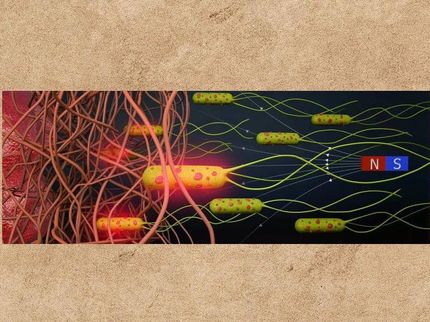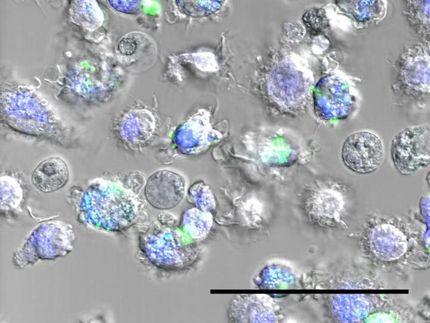Chemist monitors nanotechnology's environmental impact
Interest in 'green' innovation means not just thinking big but also very, very, very small.
At least that's the way Omowunmi Sadik, director of Binghamton University's Center for Advanced Sensors and Environmental Systems, sees it. She's working to develop sensors that would detect and identify engineered nanoparticles. Her research will advance our understanding of the risks associated with the environmental release and transformation of these particles.
"Society has a duty to not only consider the positive sides of science and technology but also the not-so-desirable sides of technology itself," said Sadik, a professor of chemistry. "We need to think not just about how to make these nanoparticles but also about their impact on human health and the environment."
A survey by the Project on Emerging Nanotechnologies found that nanoparticles — particles less than 100 nanometers in size — are now used in more than 1,000 consumer products ranging from cars to food. Silver nanoparticles are widely used as coating materials in cookware and tableware and as ingredients in laundry liquids and clothes because of their antibacterial properties. You can even buy socks infused with silver nanoparticles designed to reduce bacteria and odor.
"But what happens if we buy those socks and we wash them?" Sadik asked. "The nanoparticles end up in our water system."
Little is known about how these and other engineered nanoparticles interact with our water systems, the soil and the air. Some are known toxins; others have properties similar to asbestos. And it's difficult, if not downright impossible, to monitor them. Current techniques rely on huge microscopes to identify nanoparticles, but the devices are not portable and do not provide information about the toxicity of materials.
Sadik and a Binghamton colleague, Howard Wang, have received funding from the Environmental Protection Agency to design, create and test sensors for monitoring engineered nanoparticles and naturally occurring cell particles.
"We need to understand the chemical transformation of these materials in the ecosystem so we can take action to prevent unnecessary exposure," Sadik said. Her lab has already created a membrane that will not only trap a single nanoparticle but also provide a means of signal generation. It uses cyclodextrin, whose molecular structure resembles a tiny cup. "It can be used not only as a sensor, but also for cleanup," Sadik said.
That discovery and others make Sadik believe that nanotechnology may also prove useful in the remediation of environmental pollutants. Green nanotechnology could even reduce the use of solvents and result in manufacturing protocols that produce less waste, she said.
For instance, Sadik has used nanoparticles to transform Chromium 6, a known carcinogen, into Chromium 3, which is benign. "I do see the positive side of it," she said.
"We want to be able to develop nanomaterials while avoiding the unintended consequences of such developments," Sadik added. "We don't want to stop development, but we do want to encourage responsibility."
Topics
Organizations
Other news from the department science

Get the analytics and lab tech industry in your inbox
By submitting this form you agree that LUMITOS AG will send you the newsletter(s) selected above by email. Your data will not be passed on to third parties. Your data will be stored and processed in accordance with our data protection regulations. LUMITOS may contact you by email for the purpose of advertising or market and opinion surveys. You can revoke your consent at any time without giving reasons to LUMITOS AG, Ernst-Augustin-Str. 2, 12489 Berlin, Germany or by e-mail at revoke@lumitos.com with effect for the future. In addition, each email contains a link to unsubscribe from the corresponding newsletter.
























































